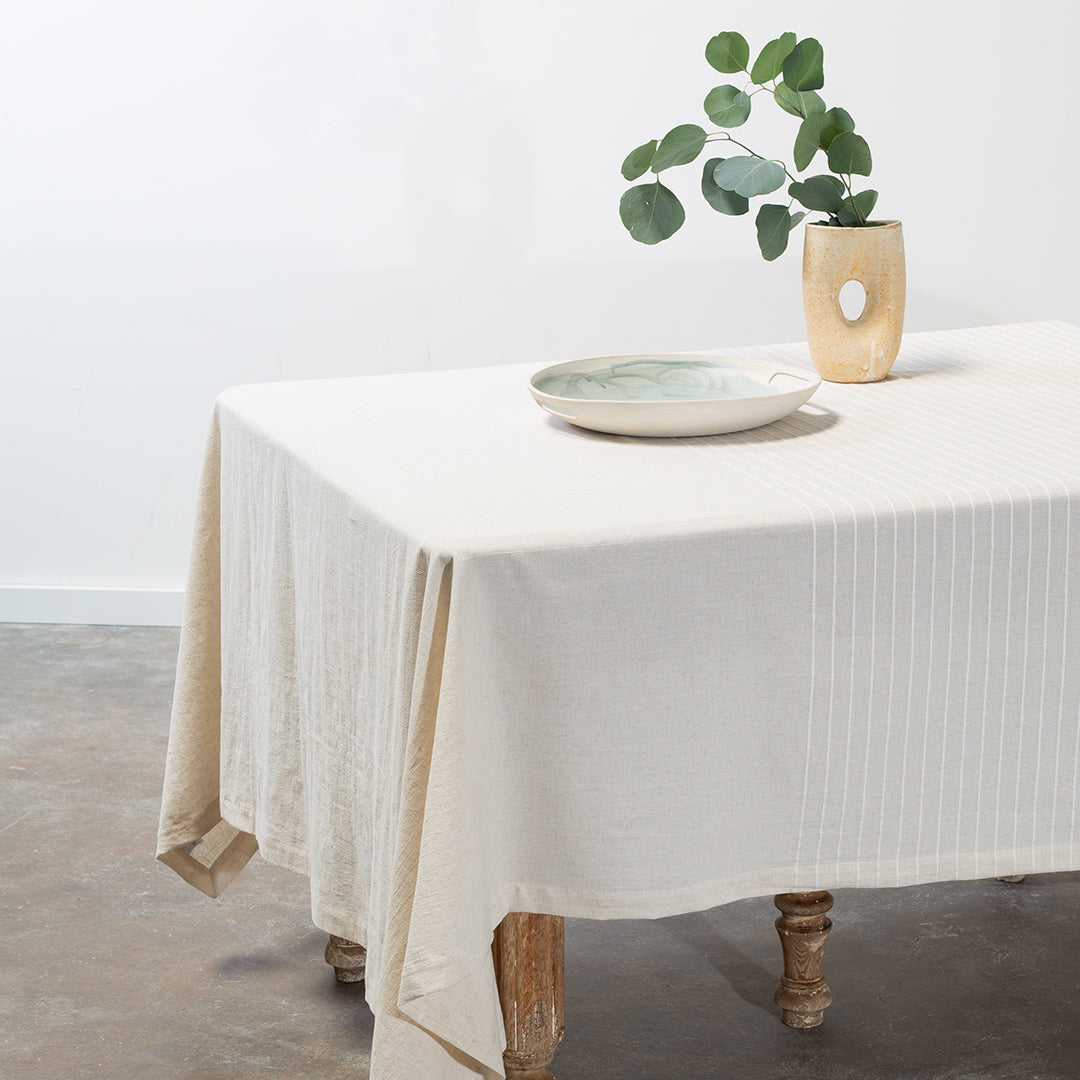How to Choose the Perfect Table Runner for Your Dining Table
Wiki Article
Linen Material Advancements: Discovering Modern Trends and Creative Applications in Design and Textile Industry
From lasting production methods to cutting-edge weaving technologies, the development of bed linen is reshaping the landscape of the fabric sector. As we dive into the realms of creative layout applications and the emergence of bed linen blends and crossbreed materials, a brand-new chapter unfolds in which bed linen's function in future textile innovations takes facility stage.Lasting Practices in Bed Linen Production
Lasting techniques in bed linen production have come to be significantly essential in the fabric market's efforts to reduce ecological impact and advertise honest sourcing techniques. Bed linen, an all-natural fiber originated from the flax plant, supplies a variety of benefits such as longevity, biodegradability, and breathability. However, standard methods of bed linen production can include substantial water usage, chemical usage, and energy-intensive processes.To attend to these challenges, lots of fabric producers are taking on sustainable techniques throughout the bed linen manufacturing process. This consists of sourcing flax from natural farms that prevent hazardous chemicals and chemicals, implementing water-efficient retting techniques to essence fibers from the flax stalks, and making use of green dyes and finishes. In addition, some firms are buying renewable resource resources to power their manufacturing facilities and minimizing waste via recycling and upcycling initiatives.
Technological Advancements in Linen Weaving
With the growing focus on lasting techniques in linen production, the textile sector is now witnessing a rise in technological developments especially focused on revolutionizing the art of linen weaving. These developments are reshaping the method bed linen fabrics are created, providing raised performance, quality, and imagination in weaving techniques.One of the essential technical advancements in bed linen weaving is the combination of electronic looms. These advanced looms are geared up with software application that permits elaborate and complicated styles to be woven with precision. By digitizing the weaving process, producers can accomplish higher uniformity and accuracy in their linen fabrics.
Additionally, advancements in yarn spinning innovation have allowed the production of finer and more long lasting linen yarns - table cloths. This causes softer and smoother linen fabrics that retain their quality also after several uses and cleans
In addition, the advancement of environment-friendly dyeing procedures and surfaces for linen textiles is getting traction. These sustainable techniques not just lower the environmental impact yet also accommodate the boosting consumer demand for fairly produced textiles.
Creative Layout Applications for Linen
Ingenious artistic techniques are increasingly forming the imaginative style applications for linen in the fabric industry. Linen's all-natural visual allure and ability to blend with various other textiles make it a favorite choice for developing unique garments and accessories that provide to the ecologically aware customer.Furthermore, designers are exploring with bed linen in home decor, utilizing its long lasting and breathable nature to craft fashionable furnishings such as curtains, bedding, and upholstery. The structure and drape of linen bring a sense of class and convenience to interior rooms, including a touch of elegance to contemporary homes.

Linen Blends and Crossbreed Fabrics

Hybrid fabrics, on the various other hand, take the idea of blending a step even more by integrating extra aspects such as metal strings, recycled products, or conductive fibers. These innovative fabrics not only broaden the style opportunities however also present functional elements like conductivity, antimicrobial residential properties, or improved durability. Crossbreed fabrics are progressively being made use of in various sectors, including fashion, interior decoration, and technological fabrics, where the need for multifunctional materials gets on the surge.
Linen's Duty in Future Fabric Innovations

In the realm of future textile advancements, linen is expected to be a principal in the growth of innovative practical materials. Scientists and developers are discovering ways to enhance linen's fundamental high qualities via technical innovations, such as incorporating smart fabrics, nanotechnology, and performance finishes. These developments aim to elevate linen's performance characteristics, making it appropriate for a wider array of applications, from activewear to protective garments.
Moreover, the combination of bed linen with various other all-natural or synthetic fibers opens countless opportunities for developing unique textiles with distinct homes and performances. By leveraging linen's features and exploring ingenious blends, the textile industry is positioned to present interesting advancements that deal with evolving customer requirements and sustainability requirements.
Final Thought
Finally, weblink the exploration of sustainable methods, technological advancements, creative design applications, bed linen blends, and its duty in my sources future fabric advancements highlight the constant evolution of bed linen material in the modern design and textile industry. With a concentrate on development and imagination, the adaptability and green nature of bed linen make it a valuable product for producers and designers alike, leading the way for further advancements and developments in the field of fabrics.As we dive right into the worlds of imaginative design applications and the appearance of linen blends and crossbreed materials, a new chapter unravels in which bed linen's role in future textile developments takes center phase.
Discovering the blend of linen with various other fabrics has led to the emergence of cutting-edge blends and crossbreed fabrics in the contemporary fabric sector. Bed linen blends supply a special mix of the qualities of bed linen with those of other fibers, resulting in textiles that possess enhanced residential properties such as enhanced sturdiness, improved draping, and lowered wrinkling.The development of linen blends and hybrid textiles has set the phase for Linen to play a critical function in driving future fabric developments.In the realm of future textile technologies, bed linen is expected to be a crucial gamer in the advancement of innovative functional textiles.
Report this wiki page